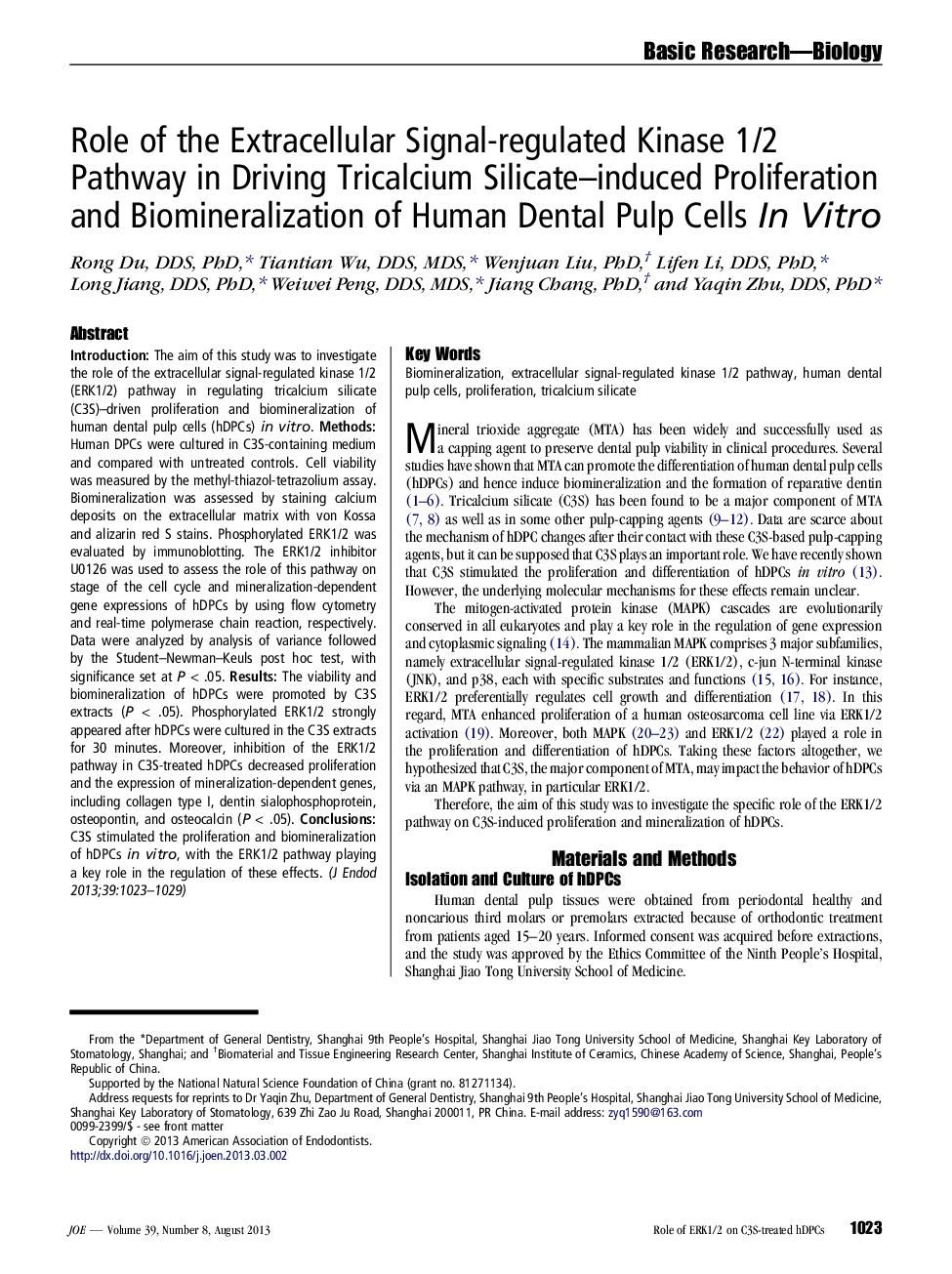| Article ID | Journal | Published Year | Pages | File Type |
|---|---|---|---|---|
| 3150357 | Journal of Endodontics | 2013 | 7 Pages |
IntroductionThe aim of this study was to investigate the role of the extracellular signal-regulated kinase 1/2 (ERK1/2) pathway in regulating tricalcium silicate (C3S)–driven proliferation and biomineralization of human dental pulp cells (hDPCs) in vitro.MethodsHuman DPCs were cultured in C3S-containing medium and compared with untreated controls. Cell viability was measured by the methyl-thiazol-tetrazolium assay. Biomineralization was assessed by staining calcium deposits on the extracellular matrix with von Kossa and alizarin red S stains. Phosphorylated ERK1/2 was evaluated by immunoblotting. The ERK1/2 inhibitor U0126 was used to assess the role of this pathway on stage of the cell cycle and mineralization-dependent gene expressions of hDPCs by using flow cytometry and real-time polymerase chain reaction, respectively. Data were analyzed by analysis of variance followed by the Student–Newman–Keuls post hoc test, with significance set at P < .05.ResultsThe viability and biomineralization of hDPCs were promoted by C3S extracts (P < .05). Phosphorylated ERK1/2 strongly appeared after hDPCs were cultured in the C3S extracts for 30 minutes. Moreover, inhibition of the ERK1/2 pathway in C3S-treated hDPCs decreased proliferation and the expression of mineralization-dependent genes, including collagen type I, dentin sialophosphoprotein, osteopontin, and osteocalcin (P < .05).ConclusionsC3S stimulated the proliferation and biomineralization of hDPCs in vitro, with the ERK1/2 pathway playing a key role in the regulation of these effects.
